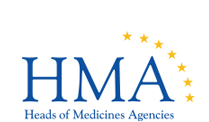In the October blog post we told you about the successful audit of the GMP Inspectorate under the JAP programme. Later that month the entire Inspectorate was assessed as part of the BEMA programme.
Background
The Benchmarking of European Medicines Agencies (BEMA) process is another Heads of Medicines Agencies (HMA) initiative. Unlike the Joint Audit Programme (JAP) which is GMP specific, this process covers the whole of the Regulatory Agency. The programme has the following broad aim:
- To contribute to the development of a world-class medicines regulatory system based on a network of agencies operating to best practice standards.
BEMA is based on assessment of the systems and processes in individual agencies against a set of indicators which have been agreed in the following areas:
- Management systems;
- Assessment of marketing authorisation applications;
- Pharmacovigilance (drug safety) activities; and
- Inspection services.

The assessment is an opportunity to identify strengths and best practices in agencies and any opportunities for improvement; it is not an audit designed to identify non-compliance. The exercise is not designed for direct comparison or ranking of agencies. Agencies are encouraged to install suitable best practices in order to enable an improved operation of the network of agencies. The benchmarking exercise includes both a self-assessment and peer review assessment against the performance indicators in the BEMA questionnaire.
The questionnaire specifically sets out 12 key performance indicators (KPIs) and 41 specific performance indicators (SPIs). The questionnaire also incorporates elements relating to the HMA strategic objectives as listed in the HMA strategy 2015-2020.
The 12 KPIs are:
- KPI 1 Strategy and planning
- KPI 2 Leadership and culture
- KPI 3 Stakeholders
- KPI 4 Quality management
- KPI 5 Risk management
- KPI 6 Crisis management
- KPI 7 Human resource management
- KPI 8 Operations management
- KPI 9 Information management
- KPI 10 Interfaces
- KPI 11 Scientific decision-making
- KPI 12 Impact/effectiveness of regulation
MHRA assessment
This is the 4th BEMA cycle and so our 4th assessment, the last being in 2013.
The peer review assessment involves a visit by a team of three trained benchmarking assessors from other member states/agencies.
They validate the results of a self-assessment through interview with Agency staff and a review of supporting documentation and records to assess the maturity of our systems in regard to each indicator on a scale of 1-5.
A rating of 1 is equivalent to little or no system in place, a rating of 3 represents a stable formal system and a rating of 5 represents the best in class.
The MHRA assessment over 3 days (17 – 19 October) was conducted by a team of assessors from Greece, Denmark and the European Medicines Agency (EMA).
They interviewed around 46 staff across the Agency in order to validate the results of our self-assessment which had been submitted in July.
So how did we do?
Following discussion of the evidence, the peer review team assigned a maturity level for each indicator.
We scored very well in a number of areas, with many examples of best practice and some opportunities for improvement pointed out. Overall, there was an increase in the ratings for many indicators compared to the results of the last assessment in 2013.
The MHRA maturity values for each KPI ranged from 4 to 5 and a maturity rating of ‘5’ was assigned to 10 of the 41 SPIs.
The BEMA assessors afterwards said they would like to express their sincere thanks to all colleagues involved with the organisation and completion of their visit.
Next steps
Next steps will include reviewing the findings to identify improvement measures and to take forward any lessons learnt.
The results of the BEMA assessment demonstrate the effectiveness of many of the Agency’s systems, reinforcing the agency’s position in the network as a leading regulator.

Don’t miss the next post, sign up to be notified by email when a new post is published on the Inspectorate blog.
Access our guidance on good practice for information on the inspection process and staying compliant.

